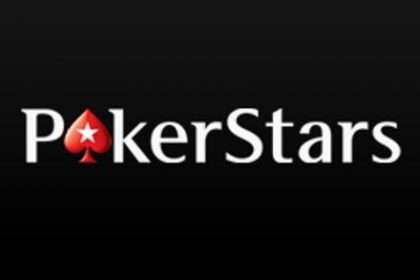PokerStars New Currency Exchange Fees a Symptom of Bigger Issue?
Last week, the biggest online poker room, PokerStars, made a change to its Terms of Service regarding fees for financial transactions made involving currencies not supported by the client. A 2.5% currency exchange fee has been added to the ToS for the site, so that if a customer wants to load or withdraw his or her funds in a currency that is not the one their account operates in, they will be charged a fee.
For example, if an Australian wants to add AUD$100 to their account, he will enter his card details as usual into the cashier. He will then be warned about the transaction costs, and see the amount that will be loaded to their account on the screen. A$2.50 will be charged as a fee, and the account will be credited with US$85.87. With no fee, the player would have $88.07.*
This is the first time PokerStars have charged players charged for financial transactions on their accounts, and players have reacted badly to the lack of communication regarding this as well as the fee itself. This was communicated to the player base by Michael Josem, PokerStars’ Head of Public Relations, who made some statements using the 2+2 forums, and was supported by a blog post by Eric Hollreiser, Head of Corporate Communications for PokerStars.
Josem wrote:
“PokerStars has made some changes to currency exchange rates and we thought we should provide a little context to the decision. PokerStars has historically applied the mid-market exchange rate from XE, and before that Reuters, for exchanging between USD and GBP, EUR, and CAD. That rate of exchange is simply not one you would have had from any financial institution or processor.
The policy change to introduce a margin on these currencies does move us more in line with the market, but we’re very confident that the new rate applied to your selected currency is still going to be extremely competitive. In fact, we’d say that it’s better than that offered by most banks, card issuers and payment providers.
The margin on these currencies, applied to the mid-market exchange rate provided by XE, will be applicable only at the point of deposit and withdrawal. There remains no fee to transfer between currency wallets in the PokerStars client, nor for joining or leaving poker tables in different currencies. We frequently review our policies across all parts of the business, which all go towards making PokerStars the safest and most secure poker site to play at, but we will post here again before any future currency exchange change goes live.”
I thought I’d have a look at the competition and see how the numbers stacked up. I used to work in financial services, and the fee of 2.5% for currency felt pretty reasonable compared to what I’ve been used to. I checked out my bank, who would charge me 2.99% on a debit card transaction, and 2.95% on a credit card for any transaction not in my local currency (UK sterling). I then talked to 888, who advised me that they put all transactions into US dollars before it leaves/arrives with them on the site’s platform, meaning every transaction not made from/to a USD account would be subject to a bank’s currency exchange fees. Skrill (formerly Moneybookers) also has fees for transactions outside of their base currencies. In addition to the withdrawal fee (around £2.32), they will charge between 2.99% and 4% (with no cap) in transfers that require a currency exchange. The maths adds up and the fee being charged by PokerStars is in line with, or better than, everything else I’ve looked at.
At this point, I thought the fees only applied to transactions outside the four main supported currencies (US$, UK£, Euro€, and Can$), especially as PokerStars had advised that no internal transfers would be subject to this fee. I understood the decision, and accepted that it was a valid charge. I had even posted in some forum discussions about my view. Then, while doing some due diligence research for this article, I discovered how this new currency exchange fee is actually being applied. Everything I have written above is correct, but I had made an assumption (and we know where that can lead). I assumed that PokerStars were trying to cover the cost of currency exchanges using their platform, and that this was their primary motivation. After a long email conversation with PokerStars support, I discovered that players, such as myself, who deposited in one of the supported currencies, but then played in another (I deposit in £, but play 99% of my games in $) were still going to be charged this fee when withdrawing their bankroll without first making an internal transfer back to their loading currency.
Having the withdrawal default to the player’s funding currency would seem to be common sense, and would cost PokerStars nothing, while greatly aiding the consumer. I’ve been so used to PokerStars getting things like this right, it hadn’t occurred to me that they’d get this so wrong.
This change of policy follows on the back of several other decisions that are not being received well by the vocal part of the poker community. The decision to pull out of around 30 “grey” markets around the world, the cancelling of several affiliate accounts and the non-renewal of several contracts for now-former members of PokerStars Team Pro. All of these decisions have business rationales behind them that make sense. The grey markets being a potential issue in some regulated markets, the affiliates no longer generating new business for the company while pocketing large sums for players who signed up years ago, and the streamlining of a large Team Pro that some of us have been saying needed overhaul anyway. What can’t be denied is the poor way these decisions have been communicated to the players. The withdrawal from the grey markets was a complete surprise to those affected by the change. Players signed in to play as usual, and were confronted by a message that PokerStars didn’t support real money gaming in their locations.
The affiliate issue has only really been publicised by the affiliates who have lost income, and by not continuing to market for new players, these sites could be argued to be in breach of their contract with PokerStars. Still, this has hurt PokerStars in the eyes of a lot of players who frequent the poker forums online as the response from PokerStars has been less than robust.
The non-renewal of some Team Pro contracts is probably the issue (before the currency exchange issue arrived) that had most players concerned. Rather than explaining (or even announcing before the players left) why certain Team Pro members were no longer with the company, the silence has been deafening.
While a lot of players are not happy about these decisions, and have been making their feelings known, it seems to be the lack of communication that is driving this. A simple email to players explaining that PokerStars was withdrawing from certain markets due to issues with some regulated markets, sent a month before withdrawal would have caused some concern, but nothing on the scale of what actually happened with no warning. A press release explaining the affiliate issue, and why those accounts were closed would have headed off concern that PokerStars was going to act against affiliates still driving new business. Actually proactively communicating the changes to Team Pro, and maybe explaining how Team Pro was changing, would both have given the players leaving a respectful sendoff as well as (hopefully) generating positive stories about the change to the marketing strategy.
In a public forum so used to spin, it’s unusual to see a company the size of PokerStars/The Rational Group/Amaya make so many public relations errors in such a small time. It could be the result of the new ownership not yet being in tune with the consumer, or the internal processes inside the company, or any number of other reasons.
What we can see if that PokerStars’ position as the trusted market leader has taken a hit with the poker community, and we won’t know how bad it is until the dust settles.
*Figures taken from XE.com on the 27th of October 2014.






















COMMENTS